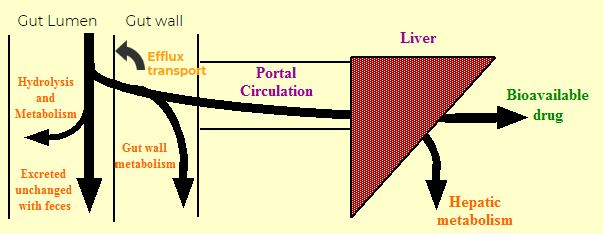1- Saturable drug absorption
Drugs that are absorbed by saturable transport system in the GIT or undergo saturable have dose-dependent .
2- Saturable protein binding
Drugs that undergo saturable plasma protein binding or saturable tissue binding, have conc-dependent distribution characteristics. Also, saturable protein binding can affect drug elimination since the rate of drug elimination is dependent on the free drug conc (specially for low extraction ratio drugs).
3- Saturable renal elimination
Drugs that are actively reabsorbed or in the renal tubules undergo dose-dependent renal elimination after administration of large doses.
4- Saturable drug metabolism
Drugs that are metabolized by a saturable metabolic pathway exhibit dose-dependent pharmacokinetics after administration of large doses.
Other conditions such as , product inhibition, and drug-related pathological changes that affect drug excretion can result in nonlinear pharmacokinetics.

